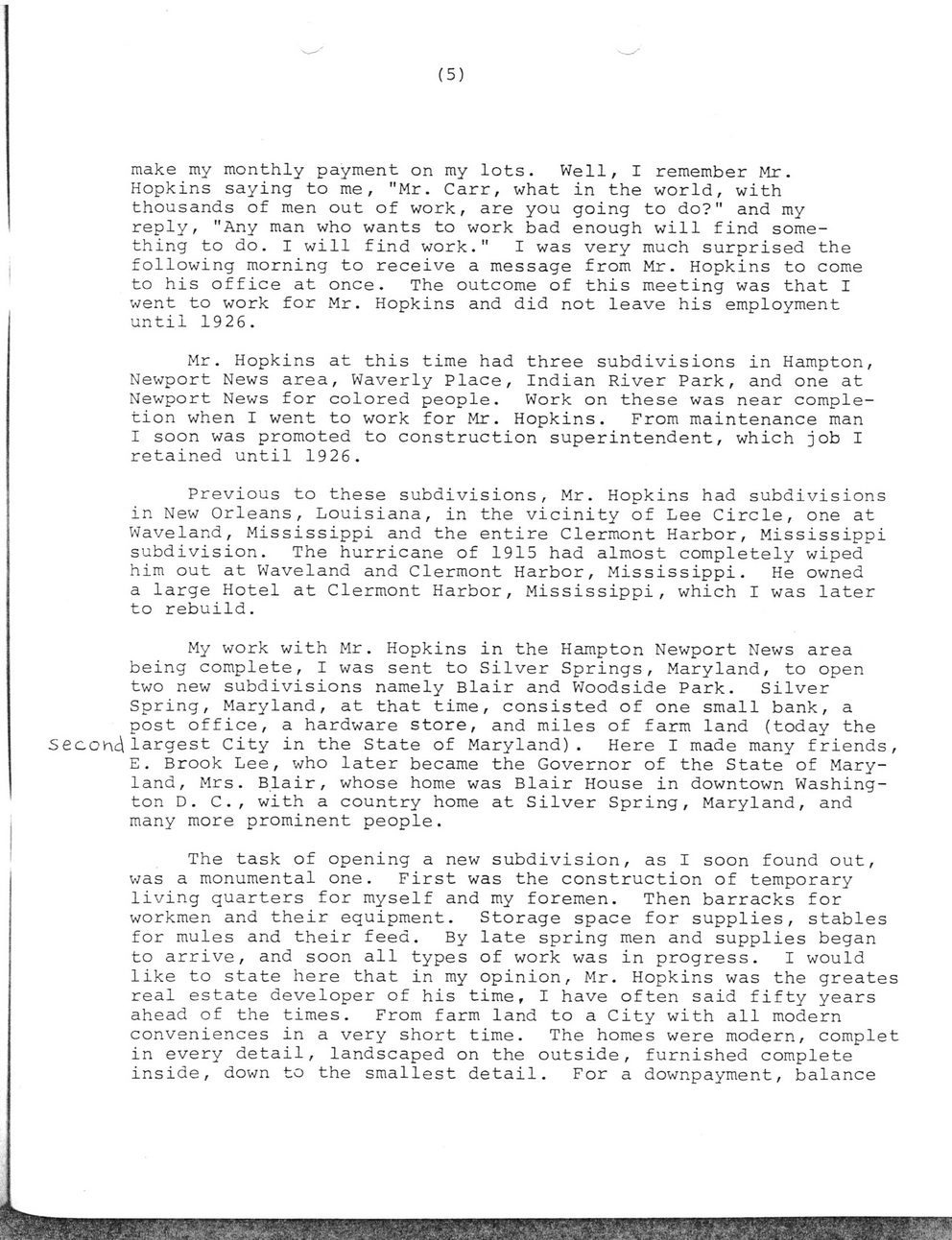This text was obtained via automated optical character recognition.
It has not been edited and may therefore contain several errors.
(5) make my monthly payment on my lots. Well, I remember Mr. Hopkins saying to me, "Mr. Carr, what in the world, with thousands of men out of work, are you going to do?" and my reply, "Any man who wants to work bad enough will find something to do. I will find work." I was very much surprised the following morning to receive a message from Mr. Hopkins to come to his office at once. The outcome of this meeting was that I went to work for Mr. Hopkins and did not leave his employment until 1926. Mr. Hopkins at this time had three subdivisions in Hampton, Newport News area, Waverly Place, Indian River Park, and one at Newport News for colored people. Work on these was near completion when I went to work for Mr. Hopkins. From maintenance man I soon was promoted to construction superintendent, which job I retained until 1926. Previous to these subdivisions, Mr. Hopkins had subdivisions in New Orleans, Louisiana, in the vicinity of Lee Circle, one at Waveland, Mississippi and the entire Clermont Harbor, Mississippi subdivision. The hurricane of 1915 had almost completely wiped him out at Waveland and Clermont Harbor, Mississippi. He owned a large Hotel at Clermont Harbor, Mississippi, which I was later to rebuild. My work with Mr. Hopkins in the Hampton Newport News area being complete, I was sent to Silver Springs, Maryland, to open two new subdivisions namely Blair and Woodside Park. Silver Spring, Maryland, at that time, consisted of one small bank, a post office, a hardware store, and miles of farm land (today the S ecoh<d largest City in the State of Maryland). Here I made many friends, E. Brook Lee, who later became the Governor of the State of Maryland, Mrs. Blair, whose home was Blair House in downtown Washington D. C., with a country home at Silver Spring, Maryland, and many more prominent people. The task of opening a new subdivision, as I soon found out, was a monumental one. First was the construction of temporary living quarters for myself and my foremen. Then barracks for workmen and their equipment. Storage space for supplies, stables for mules and their feed. By late spring men and supplies began to arrive, and soon all types of work was in progress. I would like to state here that in my opinion, Mr. Hopkins was the greates real estate developer of his time, I have often said fifty years ahead of the times. From farm land to a City with all modern conveniences in a very short time. The homes were modern, complet in every detail, landscaped on the outside, furnished complete inside, down to the smallest detail. For a downpayment, balance

Carr, Hugh Turner My-First-80-Years-Aboard-The-Planet-Earth-010